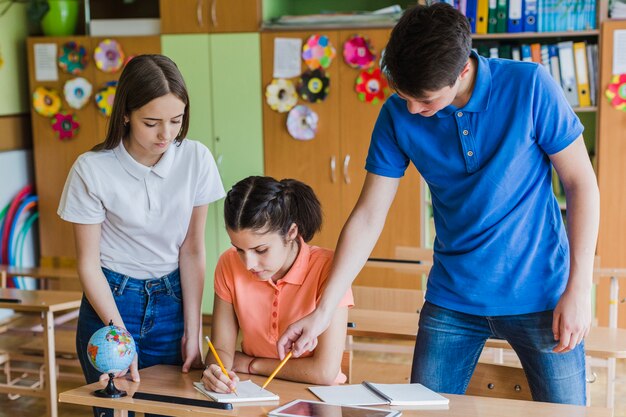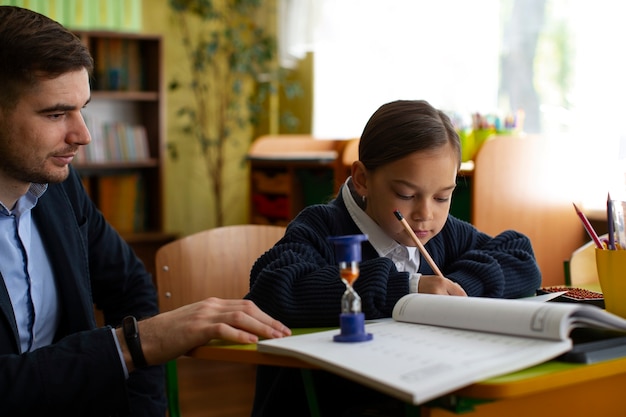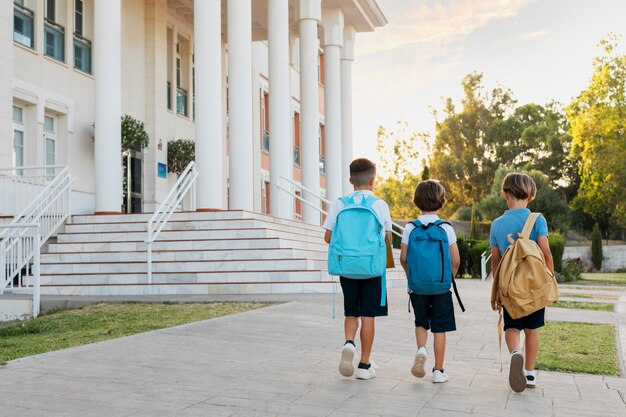Learning is no longer about listening and memorizing; it’s about experiencing, questioning, and creating connections. In today’s world, education must go beyond textbooks and tests to spark curiosity and interest in students. Engaged learners are more likely to retain knowledge and develop a love for discovery that lasts a lifetime. Schools play a crucial role in nurturing this enthusiasm by designing lessons that are interactive, inclusive, and fun. When classrooms become spaces where students feel inspired to explore, learning transforms into a meaningful and enjoyable journey.
Building Active Participation Among Students
Active participation transforms passive learners into active contributors. Teachers can encourage students to share their thoughts, work on projects in teams, and take part in discussions. Such involvement not only improves understanding but also builds communication and leadership skills. Activities like group challenges or class debates promote collaboration and creative thinking. Schools that emphasize participation over rote learning help students feel valued and motivated to learn more deeply. Interactive environments ensure that learning is not just taught but lived, experienced, and shared.
Creating a Dynamic Learning Environment
A vibrant learning space can make all the difference in how students engage with their lessons. Visual displays, flexible seating, and interactive boards stimulate curiosity and excitement. Classrooms designed with color, movement, and creativity in mind tend to hold students’ attention longer. At the best school in Vijayanagar Bangalore, the focus on dynamic and flexible classroom setups encourages hands-on exploration and student-led inquiry. By allowing movement, discussion, and collaboration, teachers can create a stimulating space where curiosity naturally thrives, helping students feel connected to what they are learning.

Encouraging Curiosity Through Exploration
Curiosity is the starting point of genuine learning. Instead of presenting fixed answers, teachers can pose open-ended questions that prompt students to think critically. Inquiry-based lessons, experiments, and real-world problem-solving projects nurture curiosity and build confidence. When students discover knowledge for themselves, they feel a sense of accomplishment that strengthens their interest in learning. At institutions like the best school in Vijayanagar Bangalore, this approach helps learners develop independence, creativity, and a passion for continuous discovery that extends beyond the classroom.
Integrating Technology in Education
Modern students are digital natives, and integrating technology into learning can make lessons more engaging and accessible. Tools like tablets, learning apps, and virtual reality can bring subjects to life in ways that textbooks cannot. Teachers can use multimedia presentations, gamified lessons, and interactive online tools to make difficult topics easier to understand. Incorporating online education for students also allows learners to explore subjects at their own pace. When technology complements traditional methods, it bridges the gap between curiosity and comprehension while preparing students for a tech-driven future.
Connecting Learning to Real-World Experiences
Students become more engaged when they see how lessons apply to real life. Field trips, guest lectures, and hands-on projects give learners opportunities to experience knowledge outside the classroom. Schools can collaborate with community programs and professionals to show practical uses of academic concepts. For example, studying the environment can include a visit to a local park, while math lessons can involve real-life budgeting exercises. These experiences help students relate theory to practice, making education relevant and exciting.
Using Creativity to Enhance Understanding
Creativity is a powerful way to make learning memorable. Teachers can incorporate art, drama, storytelling, and music to explain concepts in different ways. When students express ideas creatively, they deepen their understanding and develop problem-solving skills. Lessons that allow imagination to flourish can turn even complex subjects into enjoyable experiences. Schools that prioritize creative expression build confidence and encourage students to take intellectual risks. Learning becomes a process of exploration rather than pressure, motivating students to achieve more with enthusiasm and joy.

Personalized Learning for Every Student
Every student learns differently, and modern education recognizes the importance of adapting to individual learning styles. Personalized learning plans, flexible assessments, and one-on-one mentoring allow teachers to support each child’s unique strengths. At the best school in Vijayanagar Bangalore, educators focus on identifying individual potential and tailoring activities to suit different learners. By doing so, schools ensure that each student feels capable, confident, and valued. When students see that education respects their individuality, they engage more fully and take responsibility for their learning journey.
Encouraging Self-Discovery and Lifelong Learning
Education should not only prepare students for exams but also help them discover their passions and purpose. Encouraging students to explore new interests and reflect on their learning experiences builds self-awareness and independence. Schools can provide resources and guidance to help learners find the right course for them, whether in academics, arts, or technology. This self-directed approach fosters responsibility and intrinsic motivation. When students take ownership of their learning paths, they become lifelong learners ready to adapt and thrive in an evolving world.
Making Learning an Experience, Not a Task
The ultimate goal of education is to make learning meaningful, engaging, and transformative. Schools that focus on interactive teaching, creativity, and collaboration help students connect emotionally and intellectually with their subjects. When teachers encourage curiosity, technology enhances understanding, and lessons relate to real life, learning becomes a fulfilling adventure rather than a task. Students grow into confident, compassionate, and curious individuals who carry the joy of learning with them throughout life, proving that true education lies not in memorizing answers, but in exploring endless possibilities.

